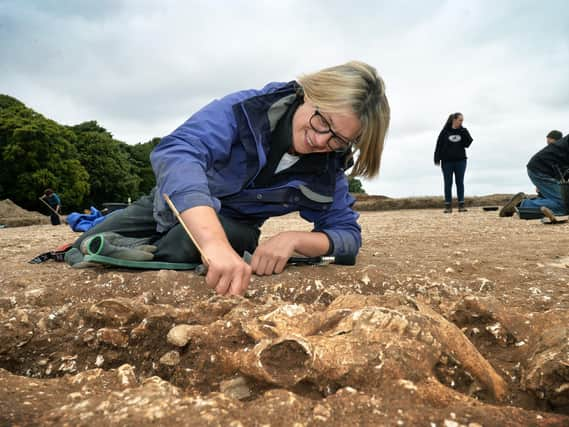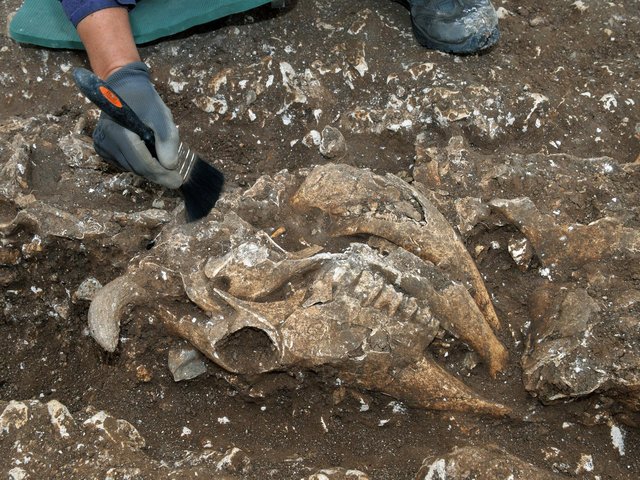A recent archaeological excavation in the Yorkshire Wolds has unearthed a fascinating Iron Age discovery – a unique “shrine” marked by meticulously placed animal skulls and bones. Led by Dr. Peter Halkon and James Lyall, the team’s four-year dig uncovered this intriguing site situated near a previously known Bronze Age “ring fort.”
The initial clues to the shrine’s existence came from aerial photographs taken over 20 years ago by Cathy Stoertz. These images revealed crop marks on a Wolds hilltop, hinting at both the shrine and the older ring fort.
Upon excavation, the shrine itself was revealed to be a square enclosure defined by a deep ditch. A central area, once hidden by a palisade fence, held the poorly preserved remains of a child. Due to the condition of the bones, archaeologists were unable to determine the child’s sex or the exact timeframe of the burial.

However, the most striking aspect of the site lay outside the central area. After the palisade was removed, a remarkable display of animal remains was left behind. Up to 40 cow skulls, some arranged in pairs, were found alongside cow bones and deer antlers, meticulously placed around the enclosure.
Further excavations at a nearby fortified settlement yielded clues to the potential inhabitants. Dr. Halkon suggests this fort, with its evidence of butchered cattle, sheep, and pork, could have housed a powerful Iron Age leader and their extended family.
Intriguingly, the animal remains deposited at the shrine differed from the everyday food scraps found at the settlement. Only cow skulls and bones, along with the antlers of hunted deer, were chosen for this particular location. Dr. Halkon points out the specific placement of these remains, with forelegs, grouped cow skulls, and a solitary skull found alongside a deer antler. This level of care suggests a deliberate act beyond simply discarding waste.
“At some point, they demolished the monument, pulled out the palisade and reopened the slot where the palisade had been and inserted all the animal bones,” explains Dr. Halkon.
The significance of these animal offerings remains open to interpretation. Dr. Halkon draws a parallel between the veneration of human heads in some cultures and the potential symbolic value of cattle skulls. He highlights the importance of cattle to Iron Age societies, where wealth was often measured in livestock numbers.
This discovery, sponsored by the Yorkshire Archaeological and Historical Society, sheds light on the complex belief systems and practices of the Iron Age inhabitants of the Yorkshire Wolds. The deliberate placement of animal remains suggests a dedicated space, possibly for rituals or offerings, offering a window into the lives and customs of these ancient communities.
Source: Yorkshire Post
